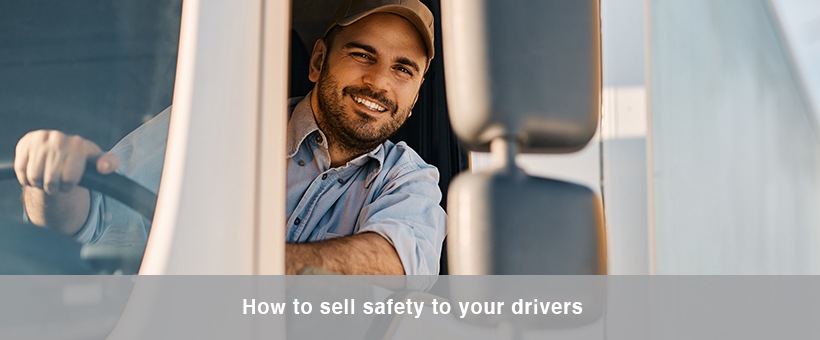
How to sell safety to your drivers
Fleets often anticipate driver resistance to safety interventions – particularly inward-facing cameras. Here we look at the best ways to get driver buy-in.
No one likes the idea of being watched, even though UK streets have more CCTV than anywhere in the world. Every shop, ATM, petrol station and bank has cameras to which most of us don’t give a second thought. Why? Because we are confident that overall these cameras make our lives safer.
And that is the key to driver buy-in to any safety system. There are a host of self-interested reasons why drivers should welcome camera-based safety – and a host of myths that SmartDrive can dispel to assuage their fears.
How does a camera-based safety system benefit drivers:
- Camera footage is the first and ultimate line of defence against fraudulent claims. SmartDrive clients find that driver attitudes toward the system usually become enthusiastic as soon as it exonerates the first of their colleagues, or indeed, themselves. And given that the system exonerates drivers far more often than it provides evidence against them, that rarely takes long.
- Drivers can use the cameras manually for security. Any situation where they do not feel completely comfortable – when lone working in remote locations, in laybys, truck stops or in the face of any disagreement with road users or customers – they can have an objective witness.
- Exoneration doesn’t just extend to the driver’s interaction with the vehicle prior to a collision – accelerator, brakes etc – but also with other things. Was he eating, drinking, checking his phone? It is very easy for someone to claim they saw the driver distracted by another activity and a driver cannot easily prove a negative unless they have in-cab camera footage which shows both hands on the wheel.
- The system’s purpose begins and ends with safety. Although drivers of larger vehicles are less vulnerable to physical harm than other road users in the event of collision, they aren’t invulnerable. Furthermore, their emotional and mental well-being can be profoundly affected, even when they weren’t at fault. So can their career, not least because many drivers involved in serious collisions do not wish to return to driving.
- Drivers who resent the idea of cameras or coaching often look at it from the wrong end, seeing it as criticism rather than development. Coaching is an investment in a drivers’ professionalism and skill. It makes him a more valuable prospect.
- The safety skills drivers acquire at work they pass on to their family and friends. This in turn makes those they love safer – and it enhances the drivers’ reputation as a ‘professional’ in his field.
- Drivers who are monitored and coached have less stressful working shifts. Their driving is smoother and their speed and distance gives them time to avoid difficult situations.
- Fleets are under intense pressure at the moment. Lower fleet costs mean more opportunity for better wage settlements.
Assuaging fears
Often drivers are uncomfortable with cameras not because they don’t see the benefits but because they fear invasions of privacy which do not actually occur.
- The current SmartDrive system does not allow real time streaming of video from the cab. No one in the traffic office – or anywhere else – can be spying on them. It would take immense amounts of data and it would serve no viable purpose.
- The cameras only turn on after a full ignition cycle. It won’t come on when the driver is resting even if they’re using air con, lights, radio etc. Additionally, a privacy mode can be set, if allowable under fleet operating procedures.
- The parameters for triggers – i.e. what the camera captures – is set by fleet management. And only those triggers apply. Nothing else is captured or recorded.
- Managers should explain to drivers exactly what the footage will be used for – for example, for individual training or providing to insurers or police – and stick to that. Managers should also be quite clear who within the organisation is allowed to view the footage. This is to protect the driver’s privacy under GDPR.
- The SmartDrive safety programme is not set up for a blame game. Mistakes can be coached, and exemplary driving can be praised and incentivised. Our system exonerates far more drivers than it provides evidence against.
SmartDrive always conducts meetings with clients and their teams to which all drivers are invited. We explain the system, its purpose and its deliberate limitations.
There is often a small amount of initial hesitation, which is natural. However, this is usually dispelled rapidly, as soon as drivers see the level of protection the system affords them.
For more information, visit: https://uk.smartdrive.net/why-smartdrive/protecting-your-drivers/
- Posted by Shannon McNamara
- On August 17, 2022

